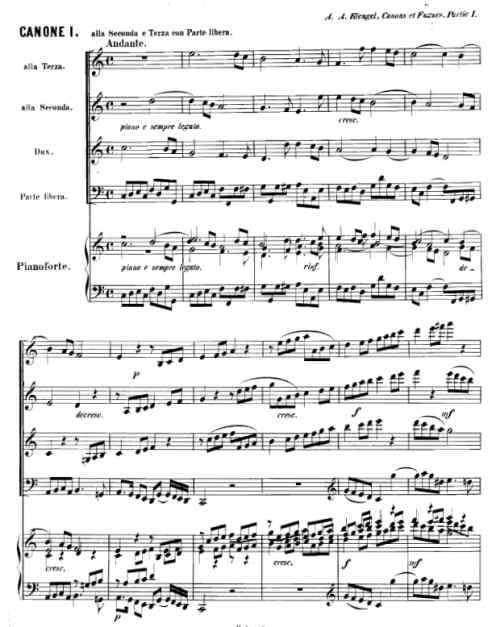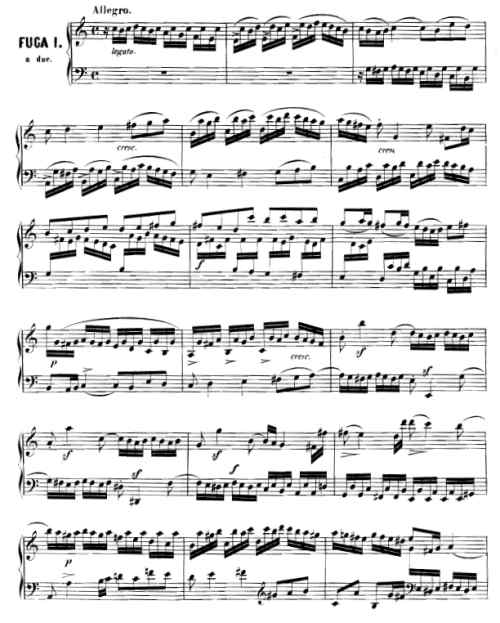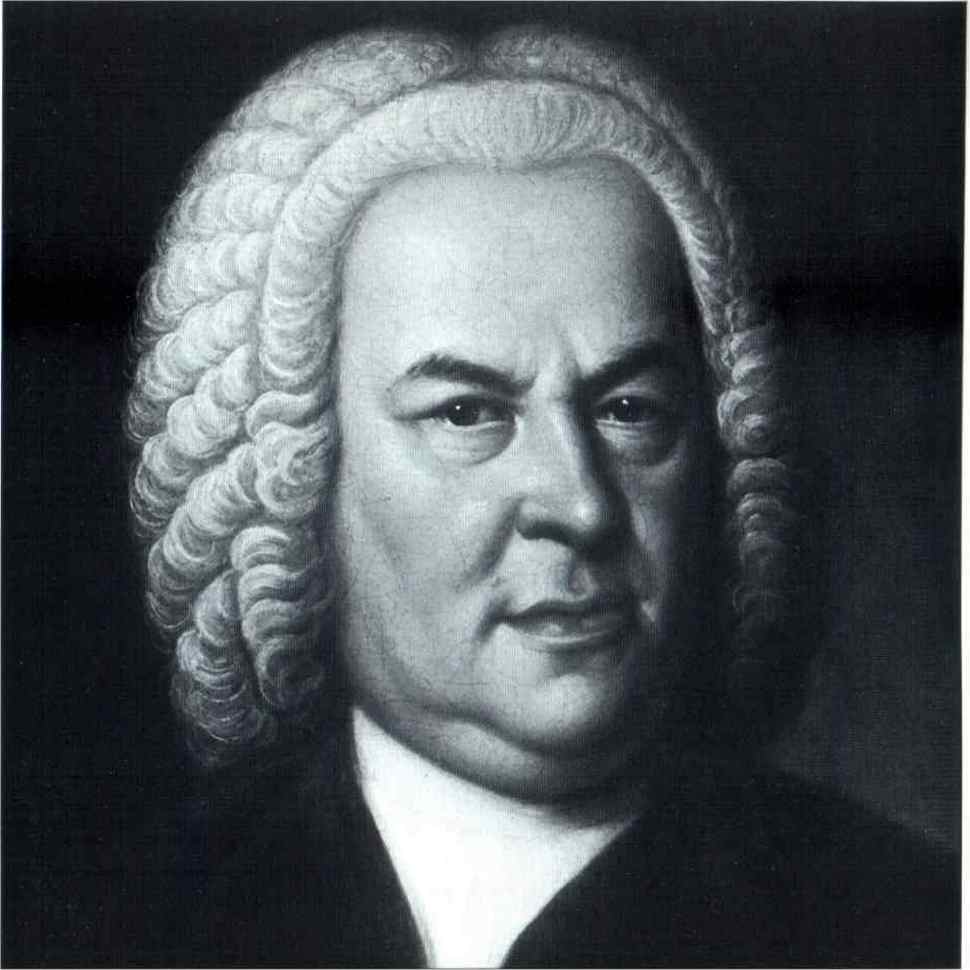The first recording of a masterpiece
1307 / 5000 Übersetzungsergebnisse The first recording of a masterpiece A myth years before publication: Up into the 21st century, Klengel's canons and fugues were a musical masterpiece that was as often admired as it was "outrageously" hidden. The reviews of the first 24 canons "Les Avantcoureurs" in 1841, the "Avantcoureurs", already speak precisely::
"But if this forerunner ('Avantcoureurs') is worth the lively participation of all (...) music connoisseurs, ... how excellent must the main work be that we still have to hope for. (...) May it be right soon to follow; it has kept us waiting long enough. " (Amz no.43 1841 p.396)
"Seldom has a musical work like the one shown here been preceded by such a promising reputation before its public appearance, and just as rarely has it been justified to such a high degree by the final publication of the work." (Siegfried Dehn in Cäcilia XXI 1842 p.50)
"Almost all important musicians of the last decade knew and appreciated the work and eagerly awaited its publication."
(Mortz Hauptmann in the foreword to the first print)
The complete recording, presented here for the first time, is intended to finally help the composer's work to be heard it deserves.



August Stephan Alexander Klengel grew up as the son of the landscape painter Johann Christian Klengel (1751-1824 see above) and his wife Rebecca née Wollrab (1759-1818 - see illustration) in Dresden. As an academy professor, his father was one of the most respected members of cultural life in Dresden. Carl Phillip Emanuel Bach's son "Johann Sebastian Bach the Younger" also belonged to this. to the painting students Christian Klengels. Obviously, Christian Klengel also attached great importance to the best training of his own son's talents. Already in the lessons of the well-traveled pianist and piano teacher Johann Peter Milchmeyer (1750–1813), Alexander Klengel developed at a young age into a respectable pianist who was already appreciated in Dresden. The far-reaching contacts of his father were certainly helpful in order to open up all the possibilities of Dresden society to Klengel at an early stage.

When Clementi met him on a visit to this Dresden society in 1803, he offered the twenty-year-old Klengel to accompany Clementi as a pupil on his concert tours through Europe and, since Clementi had withdrawn from concerts, to perform compositions instead of Clementi's. Like John Field before him, Klengel then traveled with Clementi to Prague and Vienna, where he met Kalkbrenner and Haydn. Klengels also stayed in St. Petersburg, Paris, Italy and London, some of which were longer. After 11 years, Klengel finally returned to Dresden, where he was employed, regardless of his Protestant denomination, as a well-paid court organist at the Catholic Saxon court until his retirement. In the following years he withdrew more and more from public life. In 1841 he was counted in the trade press with Ludwig Berger and John Field among the "three main students" of Clementis (AmZ 1841 p.393). 3) .

Already in his earlier compositions, sonatas, rondos variations and concerts, Klengel's special talent for the polyphonic style, which was recognizable even compared to Clementi, is repeatedly emphasized by the critics. (Amz-1816. P.140). In the last decades of his life, however, he apparently increasingly lost interest in the change in musical taste in fashion and devoted himself entirely to the composition of his main work, the 120 canons and fugues. Even as an important Clementi student and Saxon court organist, he not only enjoyed a high reputation in the musical world, but also cultivated diverse contacts with many greats in the music world, to whom he repeatedly gave insight into his work on canons and fugues. As early as 1816, for example, the Clementi student Moscheles reported on masterful "canonical etudes" that he heard during a visit from Klengel. Finally, in 1819, Klengel worked on a new edition of the Well-Tempered Clavier for the publisher Härtel, but categorically refused any payment for it, as his enthusiasm for Bach's music was enough for him.

The young Chopin also sought contact to Klengel in 1829 with a letter of recommendation from the Viennese musician Würfel. As is known from a letter from Chopin to his relatives (dated August 26, 1829), Klengel met the 19-year-old Chopin for the first time by chance in Prague at the violinist Pixis (1786-1842). Even then, Klengel played him out of his mind for over two hours without even letting Chopin play the piano himself. When Chopin visited Klengel again in Dresden a year later, Chopin himself could not be persuaded to perform publicly in Dresden despite intensive efforts, but he insisted on playing Klengel privately from his piano concertos and other pieces. He reports on this visit to Dresden: "Apart from my Klengel, for whom I will have to produce myself tomorrow, there is nothing noteworthy here. I like to talk to him because you can learn something from him." (Letter from Chopin to his relatives of November 14, 1830.). Only now after Klengel heard Chopin play does Klengel seem to have taken a liking to Chopin. He shows respect for Chopin's virtuosity and feels particularly reminded of his Clementi classmate John Field by Chopin's attack. A little later, as if from a kindred spirit, the twenty-year-old Chopin reported on Klengel's subsequent return visit, saying that he had "actually come to love Klengel as much as if I had known him for thirty years." 11. 1830) Like Klengel, a few years after his encounter with Klengel, Chopin will testify to his appreciation for the Well-Tempered Clavier with the composition of his very own highly romantic 24 Preludes op.28.

It may be that August Alexander Klengel's sometimes unwilling reactions to some of the music and musicians of his day made him appear to some as a conservative maverick . But it would be completely wrong to take as backward-looking philistine that Klengel decided in high romanticism to work on an unsurpassed masterpiece of contrapuntal music for twenty-five years. In fact, he himself is only breaking away more radically from the increasingly superficial cadence clichés and musical gallantries with which he himself was able to shine successfully as a brilliant Clementi student. From lyrical poetry to passionate virtuosity, Klengel's counterpoint contains everything that constitutes good romantic music, and is at the same time tied to a musical setting which, in terms of rigor and claim, clearly surpasses even Bach's example. With this, Klengel makes a musical claim by which very few masters of the art of music can be measured. It seems, however, that the esteem he had earned among many of his contemporaries also brought with it a respectful shyness that apparently prevented later performers from advocating this unique music to this day.
Klengel published the 24 "Avantcoureurs" in 1841 at a time when his canons and fugues had evidently been composed for a long time. Equipped with additional technical exercises on various problems of individual pieces, they were explicitly presented from the beginning as preparatory exercises for the following canons and fugues. Exercises are not just in the sense of the numerous pieces of play by Czernys or Clementis, which are primarily aimed at dexterity. Rather, they are at the same time exercises in the musical handling of demanding composition, for example in the sense of Bach's piano exercises, whose high demands on the technical mastery represent only one aspect among others.
Like the canons of the Goldberg Variations, these 24 canons, from "prima" to "nona", use all diatonic intervals at the intervals between the voices. However, Klengel's canons are usually significantly longer than the 32 bars of a Goldberg variation and, in addition to 8 canons in reverse ("moto contrario"), also show the most important other forms of canon composition: in enlargement ("aumentazione") and reduction ("diminuzione ") of the note lengths but also mirrored in one way or another (" retrogtadoretrogrado "and" rovescio "). With the large scope of his canons, with their consistent two-part structure, as well as with the use of all conceivable varieties of the canon, Klengel sets himself very high technical and compositional requirements that in fact go far beyond those of the traditional fugue. But an early criticism rightly points out that with Klengel even the strictest canons still seem musically like "freely invented and freely performed character pieces" (AmZ 1841 p.395). The second piece in C minor, for example, shows its closeness to the romantic character piece far more clearly than its canon, which is almost hidden behind it, but is consistently carried out. The technical requirements of these pieces require a well-trained piano playing despite the consistent two-part playing.This first complete recording of Klengel's extraordinary masterpiece should finally make audible what would have long deserved to be heard much more.
Of course, the systematic distribution of the keys corresponding to the Well-Tempered Clavier suggests that Klengel's two-volume collection of canons and fugues should be placed in the succession of Bach. One may also see oneself confirmed by the proximity of some of Klengel's themes to the well-tempered piano. For example, the theme of the C major fugue in Klengel's second volume is based on the reversal of the theme of the C major fugue in the first volume of the Well-Tempered Clavier. But even where a theme seems similar, such as in the Eb major fugue of WTK II and the Db fugue in Klengel's second volume, the fugues are still completely different. In his dissertation on Klengel's canons and fugues (R. Jäger, AA Klengel and his "Kanons u. Fugen", (Phil. Diss. Lpz.). 1929; p.45), Rudolf Jäger rightly denies practically everyone about the few Compositional connection between Bach and Klengel that goes beyond similar themes. Similar to Reicha in his 36 fugues, Klengel also has all the means known from the classical sonata to develop, intensify and work out climaxes for which there are hardly any equivalents in Bach's fugues. There are also quite effective harmonic twists and turns, which in Klengel's time were more familiar from Schubert or Clementi, but hardly known from Bach. Clementis Gradus ad Parnassum is more easily recognizable in many figurative works, especially technically demanding canons and fugues, than any of Bach's fugues. In contrast to the 36 fugues by Beethoven's contemporary Reicha, Klengel now also has a number of decidedly romantic features. This not only includes repeated, long, vocal melodic arcs or the repeatedly recognizable tendency to bring the strict polyphonic movement into the outer shape of catchy character pieces. There are also passages that, at least to today's listener, seem to be reminiscent of a Chopin's impromptu, such as the brilliant final climax and the pensive finale of the C # minor canon in the first volume. Like Chopin in his Variations op.2 for piano and orchestra, Klengel also draws on Mozart's aria "La ci darem la mano" in the A major fugue of the first volume. Even if you sometimes feel reminded of Mozart's thoughts on other topics in Klengel, Klengel processes this in his counterpoint in some cases no less romantically than Chopin, whom he so valued. Still others, on the other hand, appear stylistically related to Mendelssohn, who, like Klengel, can confidently incorporate achievements of the baroque and classical tradition into his thoroughly romantic music. So it is a decidedly superficial misunderstanding of the polyphonic structure of the music to conclude that there is an independent, conservative Bach epigonism. Klengel's canons and fugues are actually no closer to Bach's Well-Tempered Clavier from a musical history point of view than the church musician Bach was to the church musician Heinrich Schütz, who was a hundred years his senior. What Klengel does very well have in common with Bach, however, is the ability to compose a work of this standard to this extent: "It is agreed that no one else could now accomplish something like this; besides talent and savoir faire, this also includes passion, the complete immersion in this way .... "(Letter from Moritz Hauptmanns to Hauser of June 27, 1835) The fact that Klengel measured his standards not against a role model - not even against Bach - but solely against his own possibilities, becomes clear at the latest when he goes well beyond the demands that Bach sets himself. There are various examples of this. Even the monumental C minor fugue in Klengel's first volume shows how Klengel makes formal demands that go beyond Bach's masterly craft. The size of the fugue made Bach very likely to have suggested the conception as a double fugue. In fact, Klengel's fugue is also divided into two sections in a very similar way, the second of which, with its contrasting material, marks a clear formal section as in a double fugue.
Klengel, however, actually gains this contrasting material from the diminution, i.e. acceleration, of the original theme and, as in a double fugue, after exposition and implementation of the accelerated theme, he then confronts the slower form of the beginning, which consequently now appears as an augmentation of the second theme . So he practically formally composes a double fugue with all the associated contrasts and subsequent combinations, but develops everything completely from a single theme. This idea of referring a maximum of diversity to a single, concentrated basic idea on which everything is based is less of a baroque concept of form. Rather, it is a highly romantic conception of form, which corresponds to the mental games of romantic idealism, and which a little later will characterize Liszt's most radical form concepts, for example in his B minor sonata or symphonic poems. The clearest example of Klengel's claim, which goes far beyond Bach, is already laid out in the basic structure, and is Klengel's decision to put a strict canon in front of each fugue instead of "preludes" that are rather free in terms of composition. It is true that Klengel repeatedly seems to hide the rigor of this sentence form, which is actually consistently carried out, behind the effective use of brilliant figurations or the external appearance of a romantic character piece. In fact, however, the often three-part, and sometimes even four-part, long canons now represent by far the highest demands on the composition. In contrast, the following fugues appear to be rather freer pieces, although they are in fact not inferior to Bach's fugues in terms of their composition density. While Bach saw himself provoked in his "Rätselkanons" such as the 14 canons on the fundamental notes of the Goldberg Variations BWV 1087 for the highest constructive compression of a clear, manageable but as diverse as possible combinable tone sequence, Klengel composes canons of the range of entire preludes or fugues that are in themselves at the same time take up all form aspects of the romantic piano piece. In many cases, Klengel's dense canons require regular scores with up to four or five separate systems for appropriate presentation, such as in the four-part canons, vol. 1 in C major and G major or the four-part double canons, vol. 1 in Bb major or Vol. 2 in C sharp minor and the three-part canons with one free secondary voices in Ab major, Vol. 2 or two secondary voices in C minor, Vol. 2. Klengel expressly notes the underlying canon structures for each piece in the score. Klengel's 72 canons go beyond most historical examples in terms of their typesetting requirements as well as scope and quantity. It is precisely these canons that established his reputation as a counterpoint artist after the publication of the Avantcoureurs, and it is also the canons that aroused the greatest respect in his canons and fugues. However, a little historical distance is helpful in order to recognize and appreciate the completely different, highly romantic masterpieces under the fugues, such as the fugues in G minor, A major, and B minor in the first Volume or C minor, G # minor in the second. A lively interpretation of Klengel's canons and fugues could help to recognize that polyphony is not only a personal trait of the great Johann Sebastian Bach, but also an extremely demanding compositional technique that the best composers of the centuries before and after Bach always used turned back to pleasing results. Klengel's results, at least, are certainly among those that are worth re-appraising.